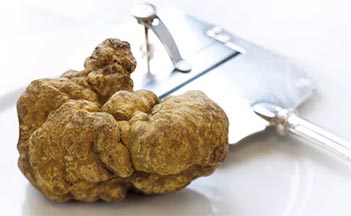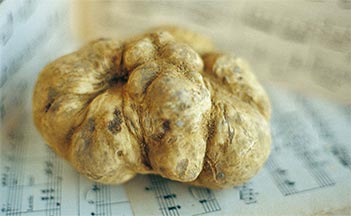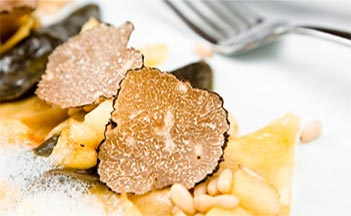Truffle is a tuber: its mass is fleshy and it’s called “gleba”. The “gleba” is covered with a sort of bank called “peridium”. Truffle belongs to mushrooms family and it’s classified into 2 categories: Tuberaceae and Terfeziaceae. In the first family truffles grow up spontaneously in the ground next to trees roots or shrubs; in the second one they mature in desert areas along the Mediterranean Basin.
In nature people know the following species:
– “Magnatum Pico” or white truffle; – “Melanosporum Vit” or black truffle; – “Albidum” or Bianchetto; – “Aestivum” or Scorzone; – “Brumale” or winter truffle. When truffles grow up near oaks, their odor will be stronger; next to lindens it will be clearer and more aromatic. Their shape instead depends on the dirt they grow: a soft dirt will create a velvet truffle, a solid one will originate instead a gnarled and warty tuber.
When truffles grow up near oaks, their odor will be stronger; next to lindens it will be clearer and more aromatic. Their shape instead depends on the dirt they grow: a soft dirt will create a velvet truffle, a solid one will originate instead a gnarled and warty tuber, Truffle has a very ancient history: very popular since Sumerian Civilization. They mixed it with legumes as barley, chickpeas and lentils and vegetable to cook a tasty soup. People thought that the tuber had a divine origin: being so different from the mushroom nature, they believed that it was a combination among water, warmth and lightning, a Jupiter’s gift. The composer Gioacchino Rossino defined it as a sort of “Mozart of mushrooms” for its own unique flavor.
Basically the maturity of the truffle is in Autumn but some species grow up in other periods, too. The main nutritional components are proteins, fats, carbohydrate, water and cinder.





